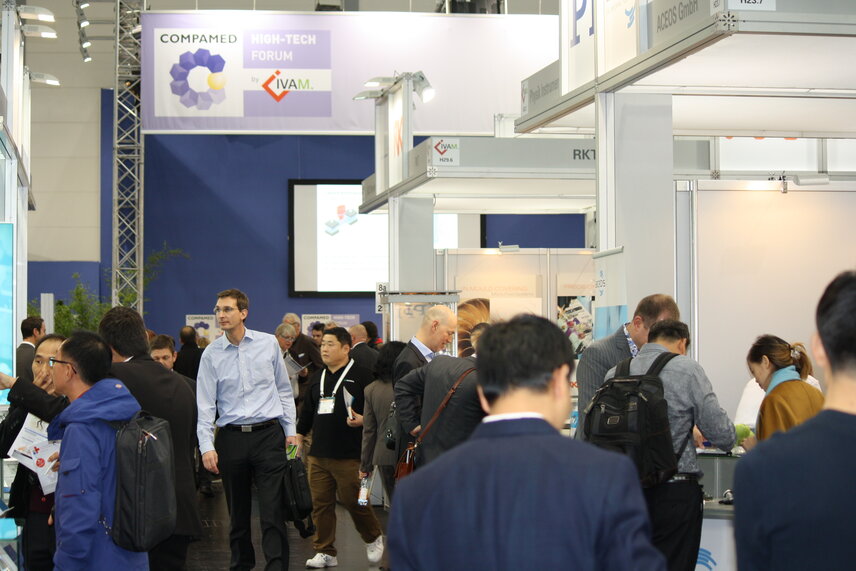In the field of consumer goods, smart miniaturized devices are already standard. The medical technology industry is now catching up. At this year's MEDICA and COMPAMED, "wearables " were omnipresent.
COMPAMED was held mid-November, during four days for the first time, once again parallel to the medical technology trade fair MEDICA in Dusseldorf and attracted 18,800 international trade visitors.
The joint pavilion of the IVAM Microtechnology Network, the Product Market "High-tech for Medical Devices" in Hall 8a, showed solutions along the high-tech value chain on more than 700 m². With a record number of 55 exhibiting companies, the IVAM pavilion was bigger than ever before.
Key enabling technologies such as micro and nanotechnology are already firmly established in the medical market. The technologies are essential for the production of smart miniaturized medical devices, such as wearables: diverse mobile diagnostic, monitoring and therapy systems that can be worn directly on the body. Microelectronic implants also play an increasingly important role. These intelligent implants combine therapy and diagnosis into so-called "theranostics" within a single system. They connect sensors, actuators and signal processing. Modern methods of microsystems technology and nanotechnology help to encapsulate the tiny components of the implants hermetically in order to achieve long-term stability. Bio-stability and biocompatibility are also major challenges that need to be resolved with the help of the high-tech industries in order to produce the best suited material and the perfect surface for protective coatings.
The exhibitors were highly satisfied with the COMPAMED. "Some exhibitors of the IVAM pavilion had such a successful first day on Monday that they directly decided to participate again in 2016 and booked their booth again" reported Dr. Thomas R. Dietrich, CEO of the IVAM Microtechnology Network.
The extension from three to four days got positive feedback on the product market, too. "The extra time provided by the additional exhibition day was gratefully accepted by both visitors and exhibitors. There was more time for intensive discussions at the booths, to visit the experts’ forum or the other exhibition halls. In particular, the synergies between MEDICA and COMPAMED were strengthened”, Dr. Dietrich explains.
The COMPAMED HIGH-TECH Forum, which was also organized by IVAM, was also positively affected by this extension. The attendance on the forum has increased significantly. In particular, the all-day session on "Smart Sensor Solutions" on the second day attracted around 500 visitors, which left hardly a seat of the COMPAMED HIGH-TECH Forum unoccupied. The session about the innovative topic "neurotechnology" organized by IVAM in collaboration with Fraunhofer IZM in Berlin, was also very well received by the visitors.
In the face of industrial societies’ demographic change, Ambient Assisted Living (AAL) is a topic of great importance. Innovative miniaturized medical devices help to ensure medical support and quality of life in aging societies in the long term. Japan and Germany are confronted by similar problems. This is why at MEDICA and COMPAMED numerous German-Japanese activities, supported by the IVAM Microtechnology Network, took place to intensify the cooperation of both nations in the field of medical technology. The German-Japanese business meetings in Halls 8a and 8b have been very successful. In particular, the Japanese exhibitors and delegations were very satisfied with the meetings and leads.
